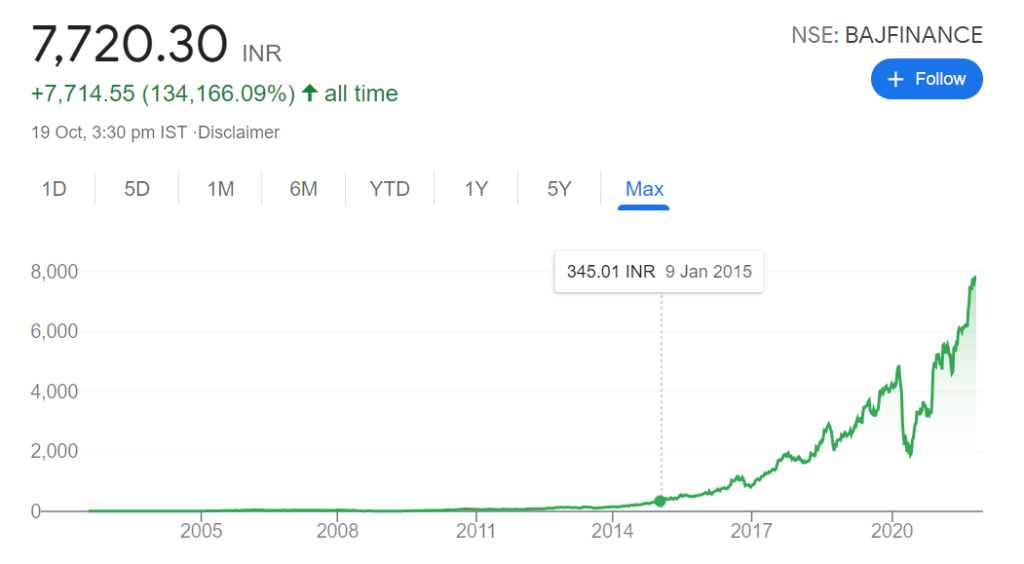The million-dollar question, right?
It is one of the trickiest questions that investors/traders face in the market.
Famous investor, Warren Buffett also advised the same to investors in his 2014 letter:
“Since I know of no way to reliably predict market movements, I recommend that you purchase Berkshire shares only if you expect to hold them for at least five years. Those who seek short-term profits should look elsewhere.”
“For the great majority of investors, however, who can – and should – invest with a multi-decade horizon, quotational declines are unimportant.”
In 2002, Berkshire had recently sold McDonald’s and Disney after holding them for a very short period, Buffett responded to a question about when he’ll decide to sell a stock asked at Berkshire Hathaway’s 2002 shareholder meeting.
He told, “We would sell if we needed money for something else — I would reluctantly sell something terribly cheap to buy something even cheaper.”
The second reason he mentioned was related to changing fundamentals.
He said, ” We sell really when we think we’re reevaluating the economic characteristics of the business. We probably had one view of the long-term competitive advantage of the company at the time we’ve bought it, and we may have modified that. That doesn’t mean that we think the company is going into some disastrous period or anything like that. We think McDonald’s has a fine future, we think Disney has a fine future, and there are others. But we don’t think their competitive advantage is as strong as we thought it was when we initially made the decision.“
But we are not Warren Buffett, aren’t we? We are normal people who get easily influenced by the normal correction in the market and can’t see the minor decline in our portfolio or even worst, the rise in the portfolio.
Since we are normal people we trade in the market with some prior assumptions regarding when to sell a stock –
- Keep a trailing stop-loss in place whenever a stock investment turns profitable so that an investor does not lose money.
- When a stock doubles in value or increases by X% from its purchase price, it’s time to sell.
- When a stock investment yields a profit, sell stocks in an amount equal to the initial investment. It will ensure that any remaining stocks are free to the investor, allowing her to hold them even if stock prices fall dramatically in the future.
If you look at these common reasons, you will understand that all these reasons are based on profit. So the investor is constantly thinking about booking the profit. But then it leads to a miserable emotional condition called regret. The investor exits his profitable stock investments too soon and misses out on the true wealth-building opportunities available in the stock market. Multibaggers as we know it.
But for any stock to be a multi-bagger, it has to pass through multiple stages. Just like whenever we want to climb a mountain we need to climb up or down multiple times.
Let’s take the example of Bajaj Finance, a true multi-bagger. On 1st January 2020, the stock was trading at Rs. 2 and now Rs. 7739.
A whopping return of 1,34,166% from the price. Only if you hold it for 20 years………………..
A long journey I know. That’s why those multiple dots…:)

The reason it gave so many returns was because of the constantly evolving business and strong fundamentals, committed management. But those who stayed on the train reached their destination. Those who got out in 2008, 2017, 2020 missed…!
This leads to the most important rule of stock market investing:
Never sell your good stocks
Warren Buffett wrote a letter to the Berkshire Hathaway shareholders in 2014 in which he said:
“For those investors who plan to sell within a year or two after their purchase, I can offer no assurances, whatever the entry price. Movements of the general stock market during such abbreviated periods will likely be far more important in determining your results than the concomitant change in the intrinsic value of your Berkshire shares. As Ben Graham said many decades ago: “In the short-term the market is a voting machine; in the long-run it acts as a weighing machine.” Occasionally, the voting decisions of investors – amateurs and professionals alike – border on lunacy”
There are few reasons as to when to sell a stock. I have categorically divided those for the patient and impatient investors.
The checklist of When to sell a stock –
For long term and patient investors –
- The company’s deteriorating operating performance
- The government begins to meddle in pricing policy and profitability.
- Changes in business dynamics with long-term consequences.
- The portfolio contains far too many stocks, making effective stock monitoring difficult.
- A stock is only a small part of the overall portfolio.
I will be throwing light on each one of these reasons and I would love to hear your ideas as well. Hence do comment.
For Short term and impatient investors –
The first piece of advice is to be patient. Still, want rules? Then here you go –
- For short term holding i.e. for 2-3 Weeks/months, 10% gain should be more than enough.
- For medium term holding i.e. for 7-8 Months, 20-25% gains should be the target.
- For long term? Dont read this.
However, if you want to be a successful investor in the market, it is important to ignore the short-term noise in the market and focus on good fundamental companies, and remain invested for a longer time horizon…!
That’s it for today..!
Will meet soon on new topic..!
Till then ciao…!
